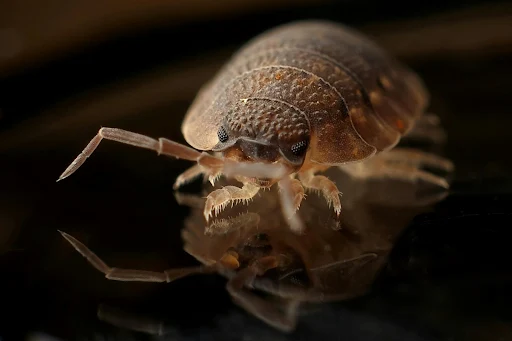Introduction
Bedbugs are tiny, blood-sucking pests that can cause major distress in homes, hotels, and apartments around the world. Despite their small size, these insects can cause sleepless nights, itchy bites, and significant anxiety. In this detailed article, we’ll explore everything you need to know about bedbugs — from identifying them to preventing and eliminating infestations.
What Are Bedbugs?
Bedbugs, scientifically known as Cimex lectularius, are small, oval, reddish-brown insects that feed on the blood of humans and animals. They are most active at night and typically hide in crevices during the day.
Adult bedbugs are about the size of an apple seed — around 5–7 mm long — and flat, which allows them to hide easily in cracks and folds of mattresses, furniture, and even electrical outlets.
Where Do Bedbugs Come From?
Bedbugs don’t come from poor hygiene. Instead, they are expert hitchhikers. They travel easily through:
Luggage and backpacks
Used furniture or clothing
Public transportation
Shared laundry facilities
Hotels and motels
Once inside your home, bedbugs can quickly spread and hide in various places — making early detection essential.
Signs of a Bedbug Infestation
Early identification is key to preventing a serious infestation. Here are some common signs of bedbugs:
Small, itchy bites on exposed skin, often in a line or cluster
Tiny blood stains on sheets or pillowcases
Dark or rusty spots of bedbug excrement on bedding, mattresses, or walls
A musty odor, caused by bedbugs’ scent glands
Live bedbugs, especially in mattress seams, box springs, or furniture joints
Bed Bug Bites: Symptoms and Reactions
Bedbug bites are usually painless at first, but they can develop into itchy, red welts. These bites often appear in a zigzag or linear pattern on areas exposed during sleep, such as:
Arms
Legs
Neck
Face
While bedbug bites are not dangerous and don’t transmit diseases, scratching can lead to skin infections or allergic reactions in sensitive individuals.
How to Check for Bedbugs
If you suspect bedbugs, a thorough inspection is crucial. Use a flashlight and a magnifying glass to examine:
Mattress seams and labels
Box springs and bed frames
Headboards and footboards
Behind wall hangings
Cracks in walls and furniture
Electrical outlets and light switches
Look for the bugs themselves, their shed skins, or tiny black fecal spots.
How to Get Rid of Bedbugs
Eliminating bedbugs can be challenging due to their resilience and ability to hide. Here’s a step-by-step guide to help you get rid of bedbugs:
1. Declutter Your Space
Remove unnecessary clutter from the infested area. This limits hiding spots and makes treatment more effective.
2. Launder Bedding and Clothing
Wash all bedding, curtains, and clothing in hot water and dry them on the highest dryer setting. Seal cleaned items in plastic bags to prevent reinfestation.
3. Vacuum Thoroughly
Use a vacuum with a HEPA filter to clean:
Mattresses
Bed frames
Carpets
Baseboards
Furniture
Dispose of the vacuum bag in a sealed plastic bag immediately.
4. Use Heat Treatment
Bedbugs cannot survive in extreme heat. Consider using:
Portable heat chambers
Steam cleaners for mattresses and upholstery
Professional heat treatment services
5. Apply Pesticides
Use EPA-registered bedbug sprays or powders. Be sure to:
Follow all label instructions
Target cracks, crevices, and hiding places
Repeat treatment every few weeks if needed
Alternatively, consult a licensed pest control professional for stronger chemical treatments.
DIY Remedies for Bedbugs: Do They Work?
Several home remedies are popular, but their effectiveness varies:
Baking soda and essential oils: Minimal impact
Diatomaceous earth: Can be effective in dry environments but works slowly
Rubbing alcohol: May kill on contact but evaporates quickly and poses fire risk
While DIY solutions might help with small infestations, professional treatment is usually more reliable for long-term control.
How to Prevent Bedbugs
Prevention is the best defense against bedbugs. Here are some bedbug prevention tips:
When Traveling:
Inspect hotel mattresses and headboards
Keep luggage on metal racks, not beds or floors
Store clothes in sealed plastic bags
Wash and dry all clothes after returning home
At Home:
Regularly vacuum and clean
Use mattress and box spring encasements
Inspect secondhand furniture before bringing it inside
Seal cracks and crevices in walls and floors
Bedbugs in Apartments and Shared Housing
Bedbugs can easily spread between units in apartment buildings or dormitories. If you discover bedbugs:
Report the problem to your landlord or building management
Work with neighbors to prevent reinfestation
Seal wall cracks and gaps around pipes or electrical outlets
Collaborative treatment is key to eliminating bedbugs in shared housing.
Myths and Misconceptions About Bedbugs
Let’s debunk some common bedbug myths:
Myth: Bedbugs only live in dirty homes.
Truth: Cleanliness doesn’t deter bedbugs. They are attracted to warmth and carbon dioxide.Myth: Bedbugs can fly or jump.
Truth: Bedbugs cannot fly or jump; they crawl.Myth: You can get rid of bedbugs overnight.
Truth: Bedbug elimination takes time, often requiring multiple treatments.Myth: Bedbugs only bite at night.
Truth: While they’re nocturnal, bedbugs can bite anytime if hungry.
When to Call a Professional
If DIY methods don’t work within a few weeks, or if the infestation is severe, it’s time to call a licensed pest control professional. They have access to:
Advanced insecticides
Heat treatment systems
Inspection dogs for accurate detection
Professional services may seem costly, but they can save you time, stress, and money in the long run.
Conclusion
Bedbugs are more than just a nuisance — they can disrupt your sleep, cause skin irritation, and affect your mental well-being. While preventing and treating bedbug infestations can be difficult, staying informed and proactive makes a big difference.
If you suspect bedbugs in your home, act quickly. Early detection, proper cleaning, and professional help when needed can stop these pests in their tracks. Stay vigilant, especially when traveling or moving, and remember: it’s possible to reclaim your home from these unwelcome guests.





No comments:
Post a Comment